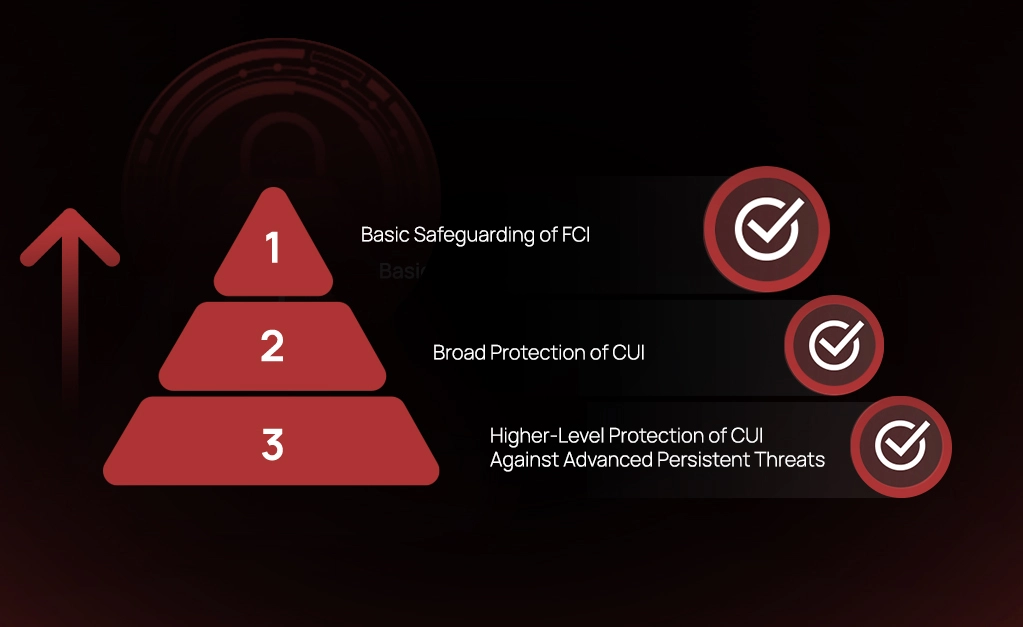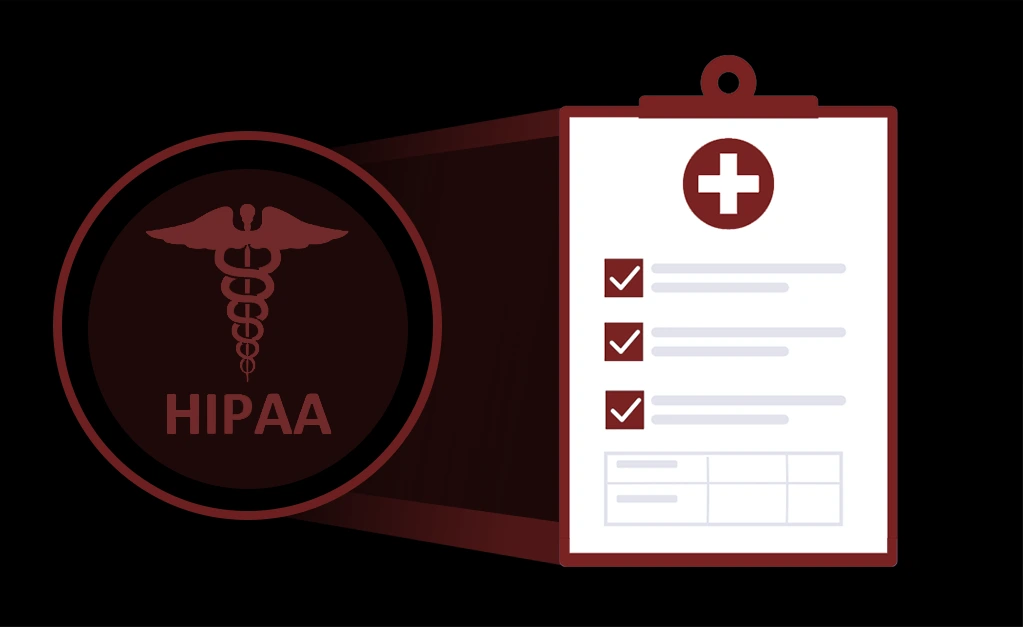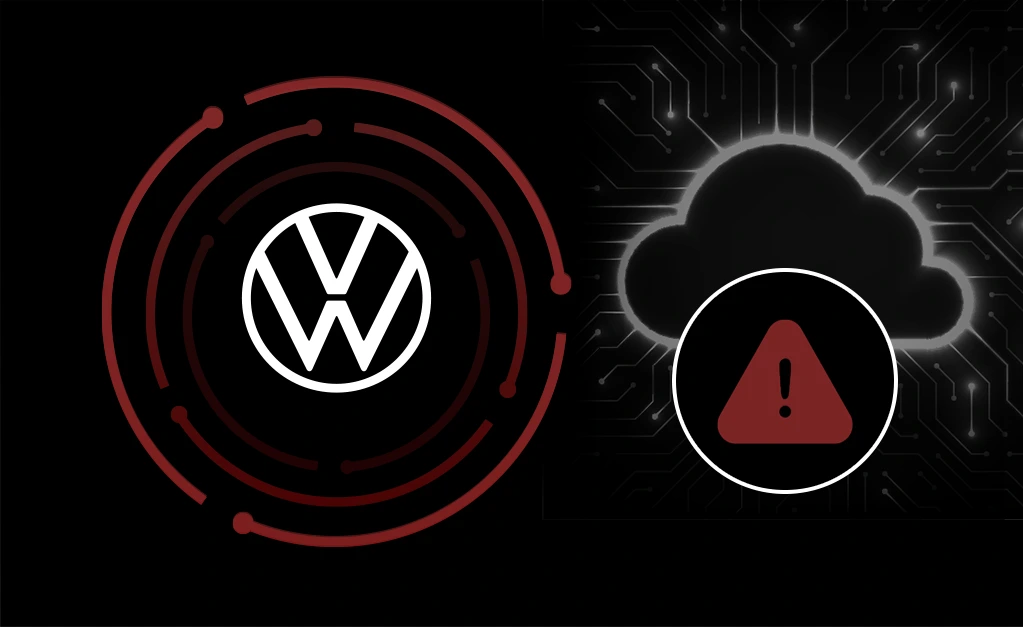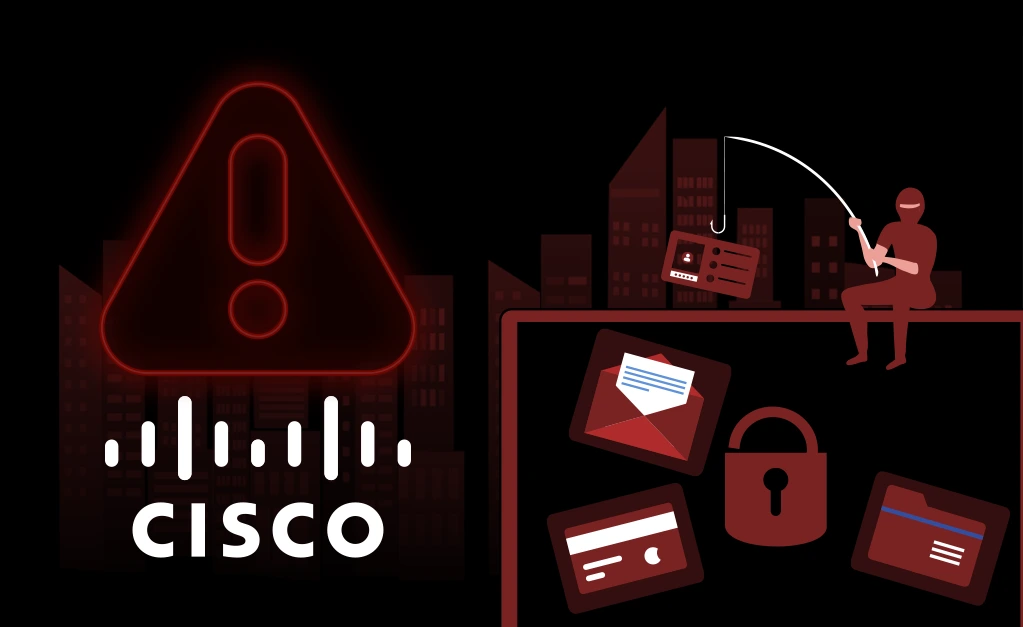
CheckRed Editorial
Understanding CMMC 2.0 – A Guide for MSPs and MSSPs
As an MSP or MSSP, helping your clients navigate the complexities of cybersecurity is a critical part of your role—especially when it comes to meeting the stringent requirements of the Cybersecurity Maturity Model Certification (CMMC) 2.0. For organizations in the defense supply chain, CMMC compliance is no longer optional; it’s a requirement to continue doing business with the U.S. Department of Defense (DoD).

However, the recently updated CMMC 2.0 framework introduces new challenges and opportunities for MSPs, offering a more streamlined and flexible approach to compliance while still maintaining high security standards. In this blog, we’ll dive into what CMMC 2.0 means for service providers, how it differs from the original CMMC, and how you can guide your clients through the process of achieving certification. Whether you’re already assisting clients with CMMC compliance or preparing to do so, understanding the nuances of CMMC 2.0 will help you strengthen your security offerings and position your services as a critical asset for businesses.
What is CMMC 2.0?
The Cybersecurity Maturity Model Certification (CMMC) 2.0 introduces three levels of certification designed to ensure that organizations working with the U.S. Department of Defense (DoD) have the appropriate cybersecurity controls in place to protect sensitive data. Each level aligns with the type of information handled, the risk associated with that information, and the level of security required to mitigate potential threats. Below is a breakdown of the three CMMC 2.0 levels and their specific requirements.
Level 1: Basic Safeguarding of FCI
At Level 1, the focus is on basic safeguarding for Federal Contract Information (FCI), which is less sensitive than Controlled Unclassified Information (CUI). This level is designed for contractors who do not handle sensitive CUI but still need to implement foundational security practices to protect their data.
Requirements:
- Annual Self-Assessment: Contractors must conduct a self-assessment every year to ensure they meet the 15 basic security requirements specified in FAR Clause 52.204-21.
- Annual Affirmation of Compliance: After the self-assessment, contractors must affirm their compliance with these basic security controls.
- Level 1 is typically a less complex certification, requiring minimal external involvement and serving as a baseline for security hygiene.
Level 2: Broad Protection of CUI
Level 2 is for organizations that process, store, or transmit Controlled Unclassified Information (CUI) and requires more advanced protections compared to Level 1. At this level, contractors must adopt the cybersecurity controls laid out in NIST SP 800-171 to safeguard CUI from a broad range of threats.
Requirements:
- Self-Assessment or C3PAO Assessment: Contractors must complete either a self-assessment or undergo an assessment by a Certified Third-Party Assessment Organization (C3PAO) at least once every three years, as specified in the contract solicitation.
- Annual Affirmation of Compliance: Contractors must annually verify that they are in compliance with the 110 security requirements outlined in NIST SP 800-171 Revision 2.
- This level is designed for contractors that handle sensitive but non-critical information, providing a more comprehensive approach to cybersecurity than Level 1.
Level 3: Higher-Level Protection of CUI Against Advanced Persistent Threats
Level 3 represents the highest level of cybersecurity protection, aimed at organizations that handle highly sensitive CUI and are at significant risk of targeted cyberattacks, such as Advanced Persistent Threats (APT). To meet the requirements for Level 3, contractors must demonstrate enhanced cybersecurity practices to protect their information systems against more sophisticated and persistent threats.
Requirements:
- Achieve CMMC Level 2 Certification: Contractors must first achieve certification at Level 2 before advancing to Level 3.
- Assessment by DIBCAC: An assessment by the Defense Contract Management Agency’s (DCMA) Defense Industrial Base Cybersecurity Assessment Center (DIBCAC) is required every three years to ensure ongoing compliance with Level 3 requirements.
- Annual Affirmation of Compliance: Contractors must annually verify their compliance with 24 additional requirements specified in NIST SP 800-172 to further enhance protections against advanced threats.
- Level 3 is intended for contractors who are at high risk of cyberattacks and require a more robust cybersecurity framework to protect the most sensitive information within the defense industrial base.
The Importance of CMMC 2.0 for MSPs and MSSPs
CMMC 2.0 is crucial for Managed Services Providers (MSPs) and Managed Security Service Providers (MSSPs) because it directly impacts the security and compliance requirements of clients in the U.S. Department of Defense (DoD) supply chain. As more organizations work with sensitive data, MSPs and MSSPs must ensure compliance with CMMC 2.0 to help clients protect CUI and FCI.
Here’s why CMMC 2.0 matters for MSPs and MSSPs:
- Ensuring Client Compliance: Many DoD contractors rely on MSPs to meet CMMC requirements. By offering expertise in CMMC 2.0, MSPs can help clients achieve and maintain compliance, ensuring eligibility for DoD contracts.
- Protecting Sensitive Data: With a focus on safeguarding CUI and FCI, MSPs must implement robust cybersecurity measures to protect client data from breaches and cyber threats, particularly in high-risk environments like defense contracting.
- Market Differentiation: As CMMC compliance becomes essential for DoD contractors, MSPs and MSSPs that are CMMC-compliant or knowledgeable in CMMC 2.0 will stand out, attracting new clients and strengthening existing relationships.
- Third-Party Risk Management: MSPs and MSSPs help manage the cybersecurity of their clients’ IT infrastructure. Ensuring compliance with CMMC 2.0 reduces third-party risks and protects clients from supply chain attacks.
- Simplified Compliance Process: With CMMC 2.0’s streamlined framework, MSPs can more easily assist clients in navigating compliance through self-assessments and third-party audits, reducing the complexity of meeting DoD requirements.
For MSPs and MSSPs looking to navigate the complexities of CMMC 2.0 compliance, leveraging a comprehensive cybersecurity solution is key. By adopting a robust, integrated security platform that includes tools for vulnerability scanning, access control, continuous monitoring, and compliance tracking, they can streamline the process of securing client environments while ensuring adherence to CMMC standards. These solutions not only help manage and mitigate risks but also position service providers as trusted partners in the defense sector, driving business growth and client confidence.
See CheckRed in Action
Dive into the future with our interactive demo
and explore the possibilities.
Related Posts




